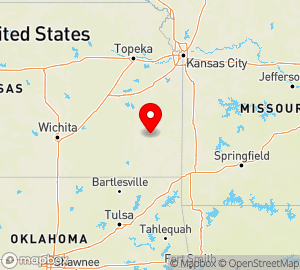Alabama
Alabama State Information

www.alabama.gov
Area (sq mi):: 52419.02 (land 50744.00; water 1675.01) Population per square mile: 89.80
Population 2005: 4,557,808 State rank: 0 Population change: 2000-20005 2.50%; 1990-2000 10.10% Population 2000: 4,447,100 (White 70.30%; Black or African American 26.00%; Hispanic or Latino 1.70%; Asian 0.70%; Other 2.20%). Foreign born: 2.00%. Median age: 35.80
Income 2000: per capita $18,189; median household $34,135; Population below poverty level: 16.10% Personal per capita income (2000-2003): $23,764-$26,505
Unemployment (2004): 5.20% Unemployment change (from 2000): 1.00% Median travel time to work: 24.80 minutes Working outside county of residence: 25.20%
List of Alabama counties:
Alabama Parks
- US National Parks
- Urban Parks
- State Parks
- National Wildlife Refuges
- National Trails
- National Scenic Byways
- National Forests
Alabama
Twenty-second state; admitted on December 14, 1819 (seceded from the Union on January 11, 1861, and was readmitted on June 25, 1868)
Alabama does not observe the anniversary of its admission day, but did hold festivities in 1969 in honor of the 150th, or sesquicentennial, anniversary of statehood. There were historical pageants, a boat parade, formal balls, music, fireworks, and the issuance of a commemorative stamp. The state was named for a southern Indian tribe, possibly a subdivision of the Chickasaws.
State capital: Montgomery
Nicknames: The Heart of Dixie; The Yellowhammer State; The Cotton State
State motto: Audemus jura nostra defendere (Latin “We dare maintain our rights”)
State agricultural museum: Dothan Landmarks Park
State amphibian: Red Hills Salamander (Phaeognathus hubrichti Highton)
State barbecue championship: Demopolis Christmas on the River Barbecue Cook- Off
State bible: The Bible
State bird: Yellowhammer or Common Flicker (Colaptes auratus)
State butterfly and mascot: Easter tiger swallowtail
State championship horse show: Alabama State Championship Horse Show
State creed: Alabama’s Creed
State folk dance: Square dance
State fish: saltwater: Fighting tarpon (Tarpon atlanticus); freshwater: Largemouth bass (Micropterus salmoides)
State flower: Camellia (Camellia japonica L.); wildflower: Oak-leaf Hydrangea (Hydrangea quercifolia Bartr)
State fossil: Basilosaurus cetoides
State fruit: Blackberry
State game bird: Wild turkey
State gemstone: Star blue quartz
State historic theatre: Alabama Theatre for the Performing Arts
State horse: Racking horse
State horseshoe tournament: Stockton Fall Horseshoe Tournament
State insect: Monarch butterfly (Danaus plexipuss)
State mammal: Black bear
State mineral: Hematite (red iron ore)
State nut: Pecan
State outdoor drama: The Miracle Worker
State outdoor musical drama: The Incident at Looney’s Tavern
State quilt: Pine Burr Quilt
State Renaissance faire: Florence Renaissance faire
State reptile: Red-bellied turtle (Pseudemys alabamensis)
State rock: Marble
State shell: Johnstone’s Junonia (Scaphella junonia johnstoneae)
State soil: Bama soil series
State song: “Alabama”
State spirit: Conecuh Ridge Alabama Fine Whiskey
State stone: Marble
State tree: Southern Longleaf Pine (Pinus palustris Miller)
State tree fruit: Peach
More about state symbols at:
www.archives.state.al.us/kids_emblems/index.html
SOURCES:
AmerBkDays-2000, p. 829 AnnivHol-2000, p. 208
STATE OFFICES:
State web site: www.alabama.gov
Office of the Governor State Capitol 600 Dexter Ave Suite N-104 Montgomery, AL 36130 334-242-7100 fax: 334-353-0004 www.governor.state.al.us
Secretary of State PO Box 5616 Montgomery, AL 36103 334-242-7200 fax: 334-242-4993 www.sos.state.al.us
Alabama Public Library Service 6030 Monticello Dr Montgomery, AL 36130 334-213-3900 fax: 334-213-3993 www.apls.state.al.us
Archives & History Dept 624 Washington Ave Montgomery, AL 30130 334-242-4435 fax: 334-240-3433 www.archives.state.al.us
Legal Holidays:
Alabama
a state in southern United States. Most of its territory is covered by a low-lying coastal plain which is marshy in places. The spurs and foothills of the Appalachian Mountains, which are crossed by the Tennessee River, are located in the north and northeast. With an area of 133,700 sq km, Alabama has a population of 3,540,000 (1967), of which approximately 30 percent is Negro. Its capital city is Montgomery. The urban population constitutes 55 percent (1960). Between 1950 and 1960, 368,000 people, including 224,000 Negroes, migrated from Alabama. Economically, it is a relatively backward state, with poorly developed mechanical engineering and only 276,000 people employed in the processing industry (1965). The major branches of industry are the ferrous metal and the related metalworking industries. There is mining of pit coal (1965 output, 13.5 million tons), iron ore (1965 output, 1,519,000 tons of metal), and bauxite. The textile industry consists mostly of cotton cloth production. The chemical industry (Muscle Shoals and Huntsville) and lumber and paper industry (Childersburg) are being developed. The established capacity of the electrical power stations is 9.1 million kW, including 2 million kW from a hydroelectric power plant (1966). The largest industrial centers are Birmingham, Gadsden, and Mobile (the major seaport of Alabama). In the Tennessee River Valley there are chemical and other power-consuming enterprises. Huntsville has factories producing rockets, missiles, and explosives. Alabama’s major farm products are broilers (third place in the nation), cotton (192,000 tons in 1965, fifth place in the nation), and eggs. Cattle are bred (in 1968, 1,848,000 head). Sowing areas cover 2.4 million hectares and include maize, peanuts, and fodder.
M. E. POLOVITSKAIA
Alabama
a conflict between the USA and England which arose because of the military aid provided by England to the insurgent slaveholding states during the US Civil War (1861–65). In particular, the British government outfitted military ships for the rebels. One such ship was the cruiser Alabama, a cannon-armed wooden screw-steamer displacing 1,040 tons. In Aug. 1862, the cruiser, commanded by Captain R. Semmes, began actions against the trading vessels of the Northerners. Between 1862 and 1864, it seized and destroyed 68 trading shfps and one military ship on the Indian and Atlantic oceans. On July 14, 1864, it was sunk near Cherbourg by the Union corvette Kearsarge. After the conclusion of the war the USA raised the issue of the so-called Alabama Claims concerning England’s responsibility for the actions of the Alabama and other Confederate cruisers. The conflict was not resolved until Sept. 14, 1872, by a court of arbitration in Geneva. In accordance with the court’s decision, England paid the US $15.5 million.